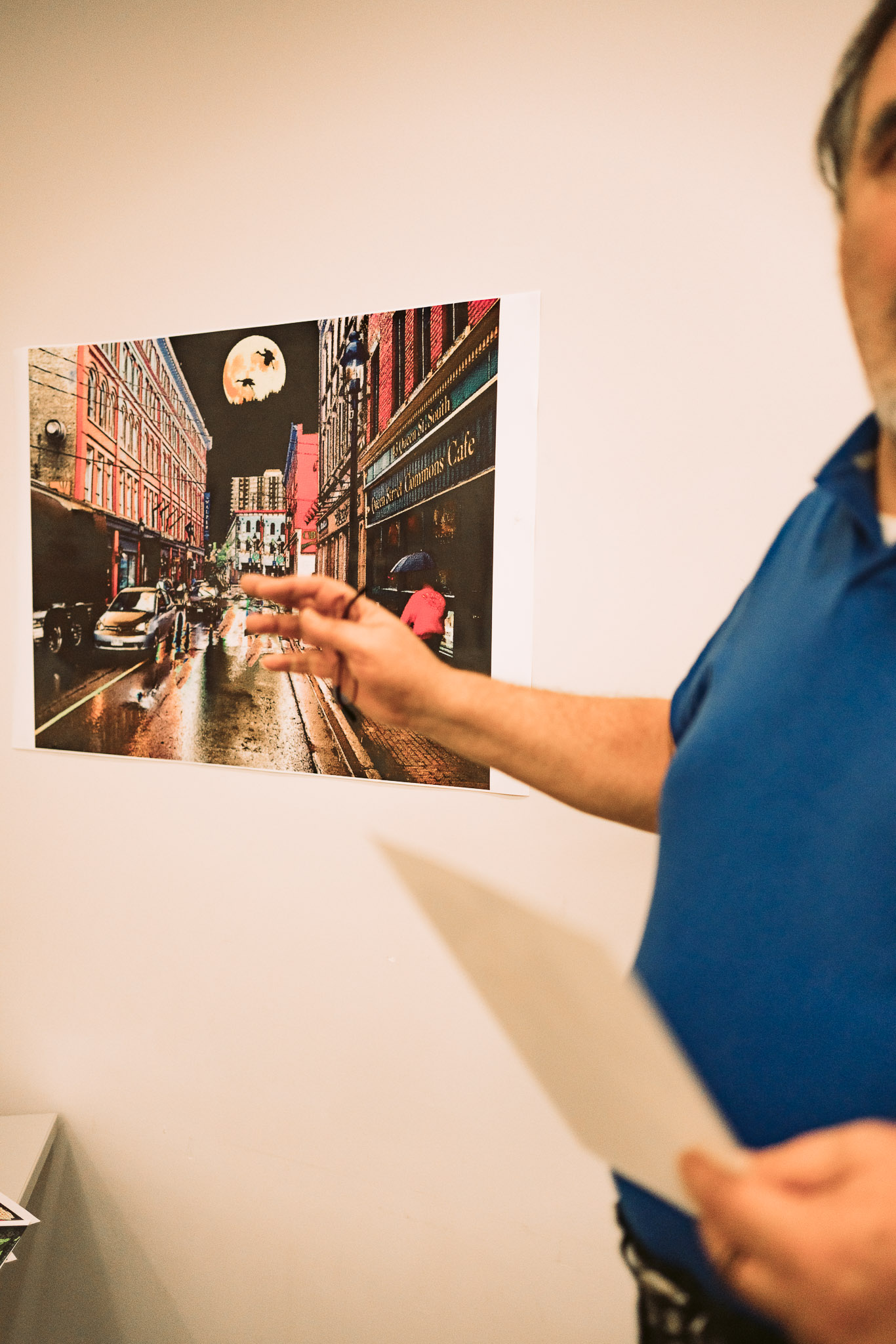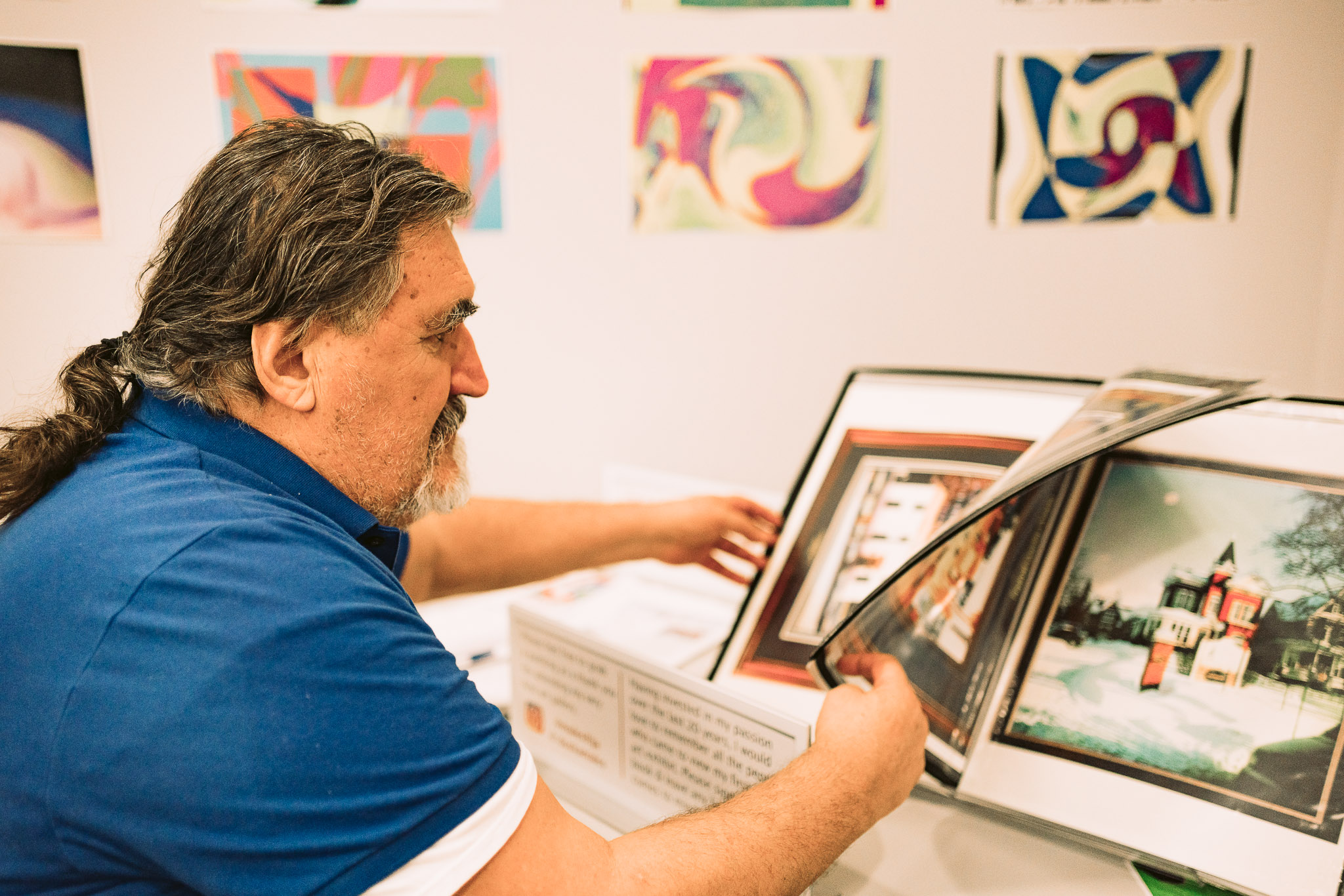With 53,000 pictures in his portfolio, it would take 73.6 hours or just over three days to view everything digital artist Ilija Males has created in his 20-plus years as an artist.
And though they’re different in colour, shape, composition and inspiration, each abstract image points back to the 71-year-old’s life as a math teacher, a bus driver, a war refugee, a father, a Kitchenerite, a fan of the arts and a lover of nature.
“I use my photos from my cell phone. I took flowers, sky, food, leaves, fruits and nature in different compositions and I do abstract photos in really rich colours,” Males said, describing his work as a combination of abstract geometric and biological.
For the most part, each piece starts with what he calls a “base,” a digital photo he snapped of a street corner, an electricity tower or a juicy tomato – whatever catches his eye.
From there, Males uses digital sketch programs and Adobe Photoshop to zoom in, flip elements around and adapt the colours. “I change the colour slowly,” he said, “and stop when I’m feeling good.”

The whole process is like driving a car, he says: once you go forward, you’re not moving back. Or, to put it another way, “you have three different sketches, and [with] each sketch you have 50 possibilities.”
Though Males always wanted to be an artist, he didn’t begin with digital art. His journey started as a child growing up in Bosnia, where he found inspiration in the greats – from da Vinci’s Mona Lisa to the paintings of Picasso and Rembrandt.
“In middle school, I was taking art classes and the teacher said to my mom, ‘he has such talent,’” Males remembers. But to pursue that talent, he would have to move away from his family and attend a high school that focused on painting. “I didn’t go because my mother said I was too small to go so far away.”
So, Males became a math teacher instead. For 20 years, he taught high school math and computer science in the former Yugoslavia, and started a family of his own.
It was in a textbook where he found artistic inspiration again. “I looked at one book and inside was a graphic,” he said, describing it as black-and-white pop-art generated by a computer. “I said, ‘look at this. It’s beautiful.’ ”
From that point on, Males wanted to explore digital art – but with war spreading through the region, he couldn’t purchase a computer. He spent his days teaching because he was the only math teacher in his school; he spent his nights digging trenches for soldiers, because he had to.
“Some took us underground,” he said, “even while the enemy was fighting with us.” He remembers hearing gunfire closeby and voices approaching through those tunnels, but never knowing which side they belonged to.
His wife and children fled to Austria, and the family who remained had to make do with very little. “The first day, my mom ate. The second day, my mom’s mom ate. And the third day, I ate.”
Males didn’t meet his daughter, Duska, until she was four and a half years old and his family finally received the all-clear to migrate to Canada.

When they landed in Quebec City, Males found a job teaching math. But when some friends who went to Conestoga College suggested Males and his family move to Kitchener-Waterloo, he took the chance.
“It was an easier life in Kitchener than it was in Quebec City for an immigrant,” he said. And it wasn’t long until he landed a job as a math teacher – this time, in the French immersion system. “That gave us a home.”
It also allowed him to buy his first computer in 1998. It came with built-in sketching software that piqued his interest and opened the door for him to create his first series, Kitchener in the Night.
At first, he sold his work at Queen Street Commons. “I had nine photos and I sold three,” he remembers. He also sold prints at Kitchener Market until vendor restrictions made it difficult for him to spend entire mornings there.
Now retired from teaching, he drives a small six-seater van for Sharp Bus Lines. He’s also worked as a driver for City Hall, which means he’s traveled Kitchener well and snapped photos across the city. “There’s nothing that I missed,” he said with a laugh.
Most of his work is best displayed on-screen, he adds. Whether it’s digital frames or slideshows, he says the colours work best when they’re lit up or projected. “Computers have over a million colours. If you want a blue, there are 2,500 blues,” he said.
So when Males had the opportunity to host an artist reception at the Kitchener Public Library last December, he jumped at the chance. “About 40 photos got put on the wall and [there was] a book with 40 photos of Kitchener in the Night,” he said. The lower level of the library had a slideshow of his work across six TV screens, too.
Though he received a lot of support and positive feedback from the exhibit, it was a strange feeling to see his work on display, he said. “I saw my photos on the wall, and then I got sad and I felt empty.” In fact, he didn’t watch his own slideshows, his daughter Duska added.
“He has seen them so many times and he wishes he could make changes or alterations,” she said. “Your first time seeing things, you don’t see those flaws.” He knows where every red, yellow, green and blue come from, something no one else will ever truly know.
But that won’t stop Males from putting more of his work out into the world, he says. He’d love to see his work anywhere where there are screens and people waiting – airports, medical offices, retirement homes, malls and more.
As for the future? “I’m hoping to display at Waterloo and Guelph libraries and appear on Google,” he said.




Leave a Reply